Lag-screw fixation
1. General considerations
Partial articular fractures require anatomical reduction and may be fixed with lag screws if the size of the fragment allows.
The reduction can be assisted with arthroscopy if skill and equipment are available.
The joint may collapse if there is impaction or comminution while the lag screw is tightened. In this case, plate fixation should be considered for chondral support.
This fracture type may be associated with metacarpophalangeal (MCP) joint dislocation. In this case, the dislocation must be manipulated, and any interposed soft-tissue structures removed.
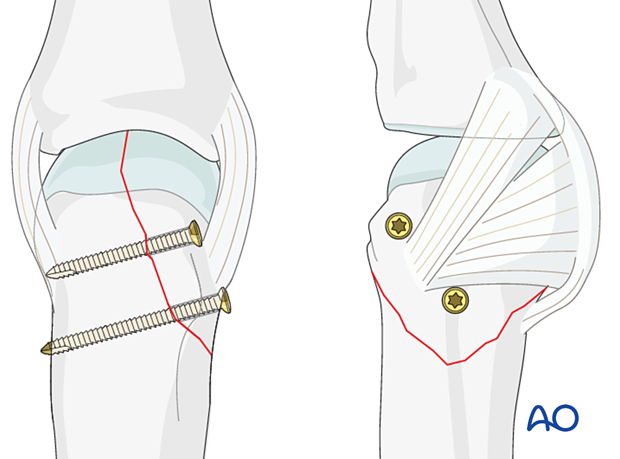
Percutaneous vs open reduction and fixation
Percutaneous reduction and fixation may be performed.
The advantages are:
- Shorter operation time
- Less soft-tissue damage
- Faster mobilization
This treatment option needs some skills and experience and special reduction forceps to avoid impingement of swollen soft tissue (atraumatic technique).
These reduction forceps allow to hold the reduction at the planned screw placement, and drilling and screw insertion. There is no need for additional K-wire fixation or reduction forceps placement.
If a percutaneous reduction is not achievable, the treatment can be changed to open surgery.

2. Approach
For this procedure, a dorsal approach to the MCP joint can be used.
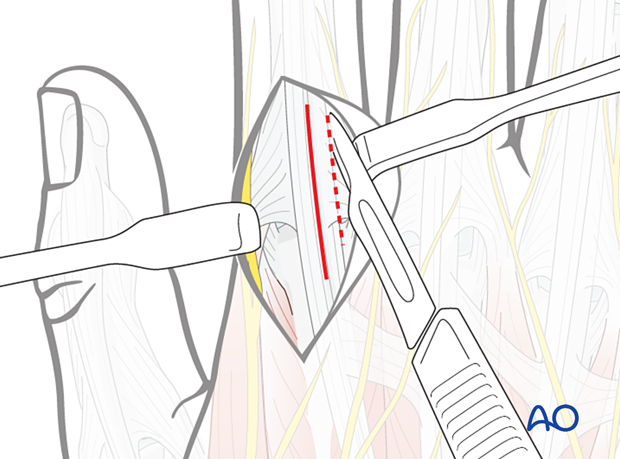
3. Reduction
Closed reduction
Reduce the fracture indirectly by manual traction.
The articular reduction can be confirmed with arthroscopy.
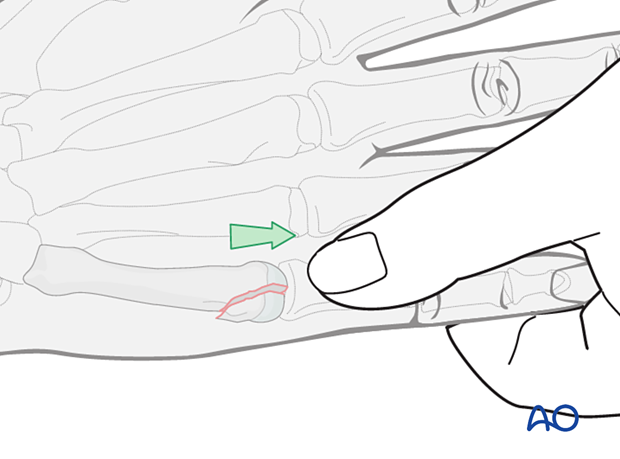
Special reduction forceps designed for percutaneous fixation may be used to hold the reduction.

Open reduction
For more accurate reduction, use small pointed reduction forceps gently to manipulate the fracture. Application of excessive force can result in fragmentation.
Confirm reduction with an image intensifier.
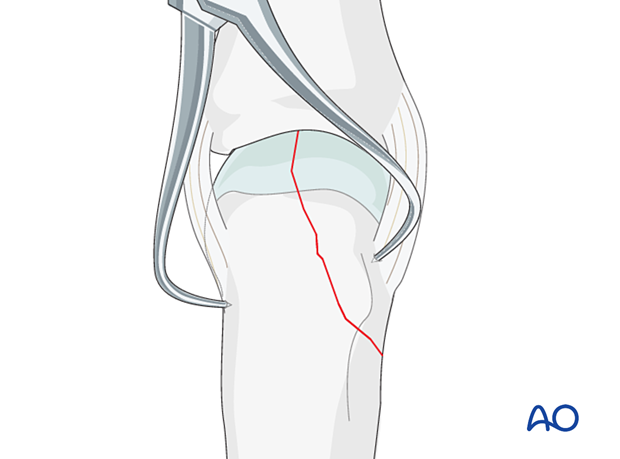
Preliminary K-wire fixation
Preliminarily fix the fragments by inserting a K-wire. Be careful to place it so it will not conflict with later screw placement.
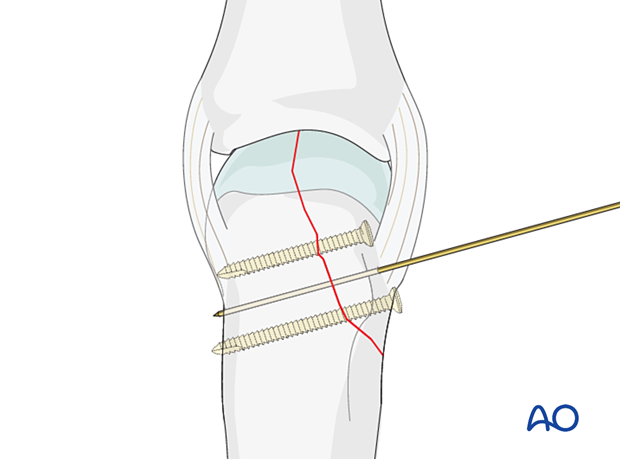
Stability evaluation
Confirm reduction with an image intensifier and check the joint stability by flexion and extension. This should show congruent movement compared with the adjacent joints.
4. Fixation
Planning for screw insertion
Each lag screw must be inserted perpendicularly to the fracture plane.
Do not insert screws too close to the fracture apex or the subchondral bone. A minimal distance from the fracture line, equal to the screw head diameter, must be observed.
The screw insertion should avoid conflicts with the MCP ligaments.
The screw length needs to be adequate for the screw to penetrate and purchase in the opposite (trans) cortex.
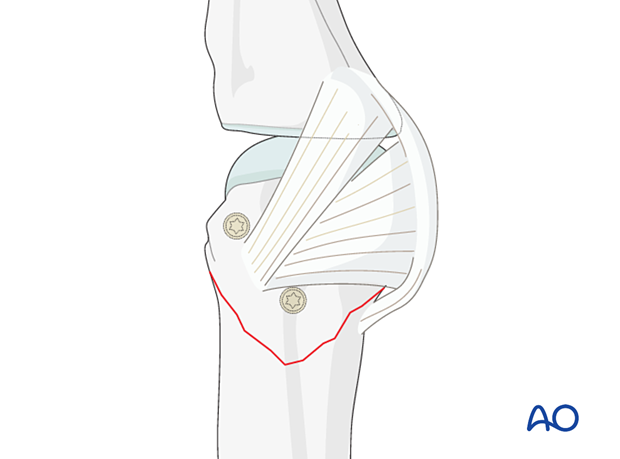
Screw size selection
The exact size of the diameter of the screws used will be determined by the fragment size and the fracture configuration.
The various gliding and thread hole drill sizes for different screws are illustrated here.
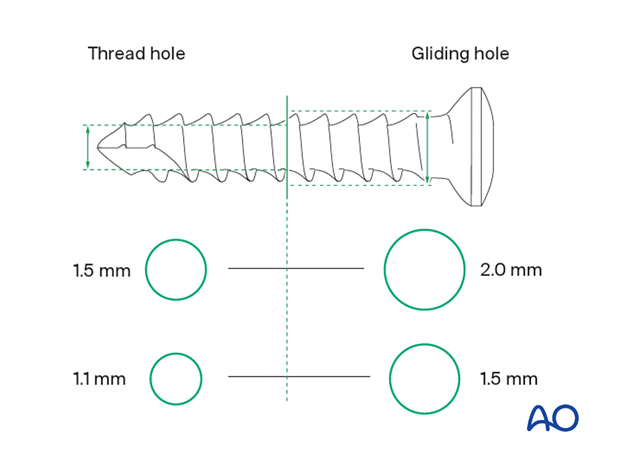
Pitfall: countersinking in the metaphysis
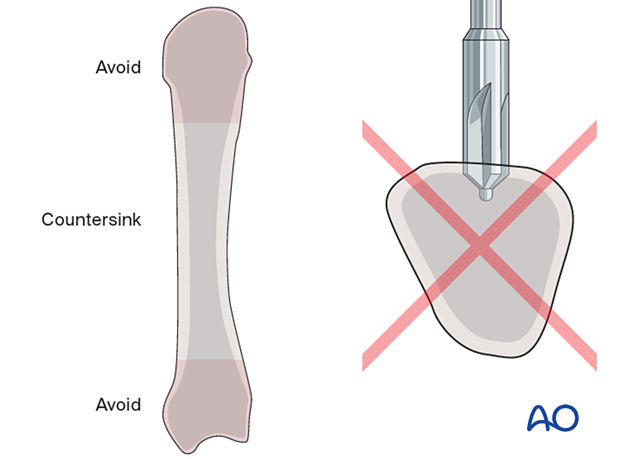
Screw insertion
Insert the screw closest to the articular surface first.
Alternate tightening of the two lag screws helps to avoid tilting the fragment and applies even compression forces across the fracture surface.

5. Final assessment
Confirm anatomical reduction and fixation with an image intensifier.













